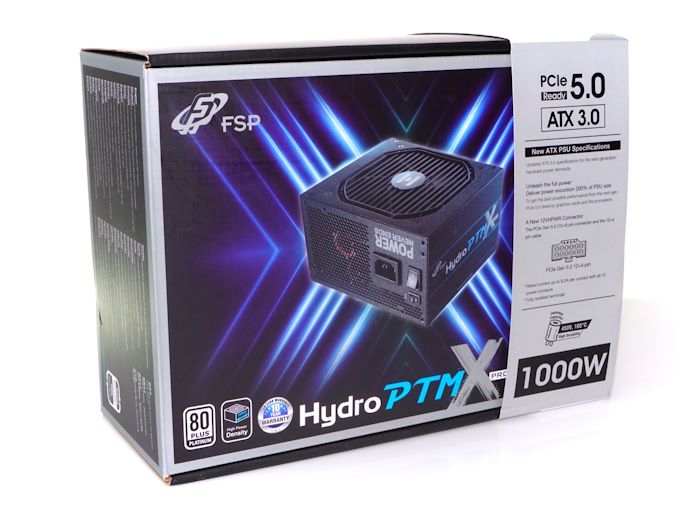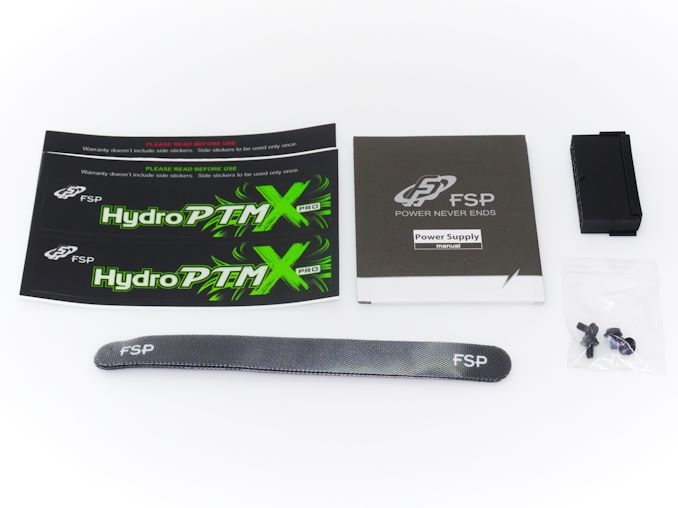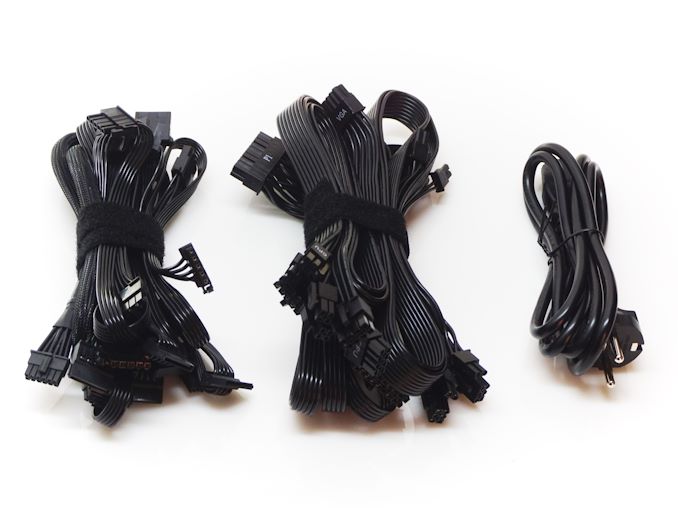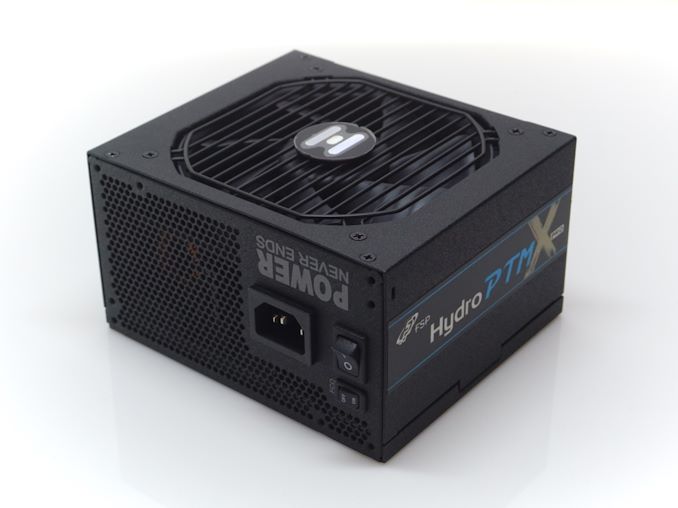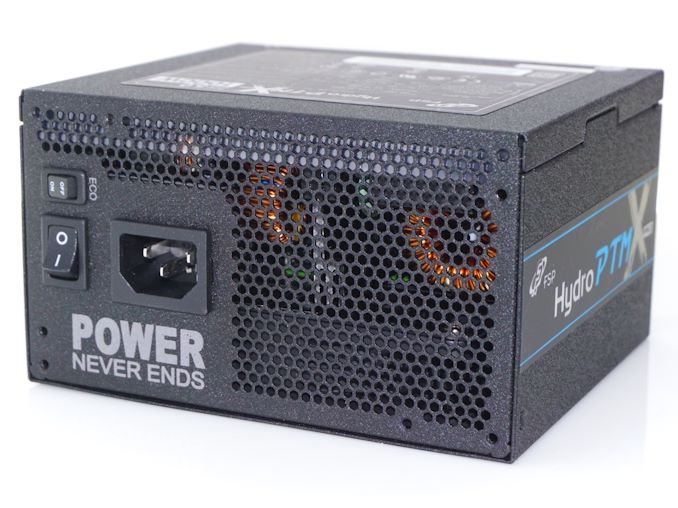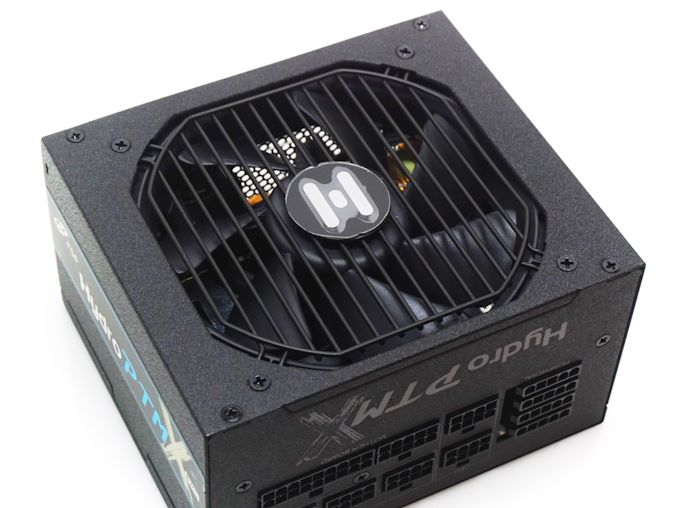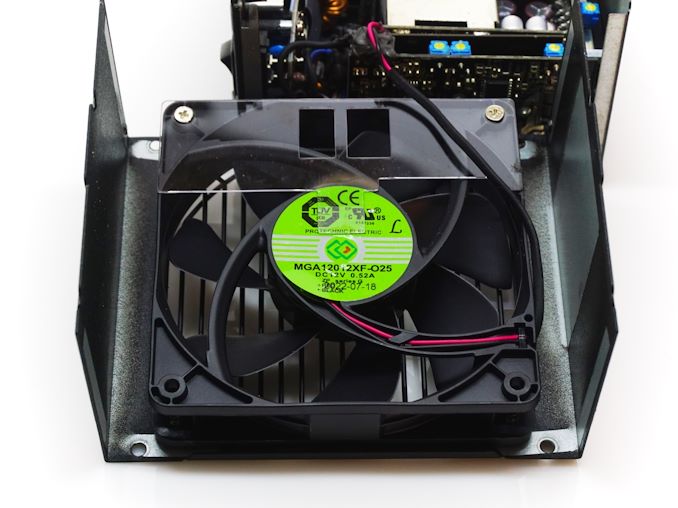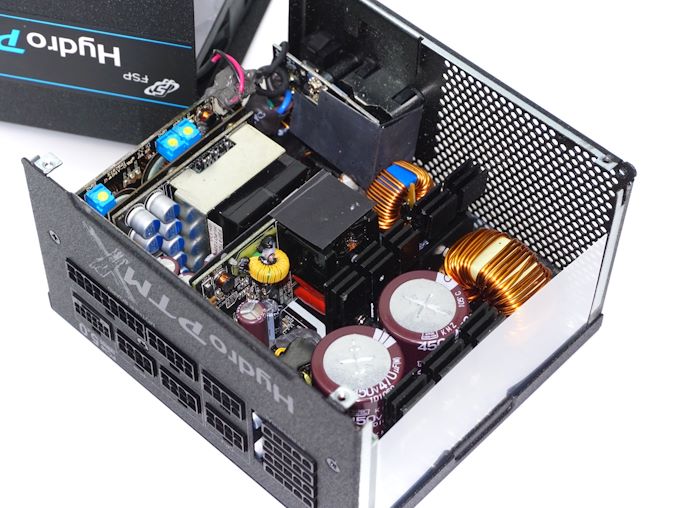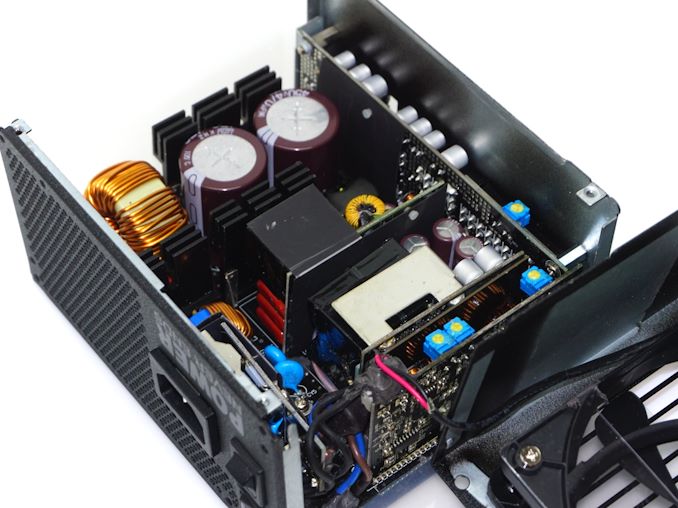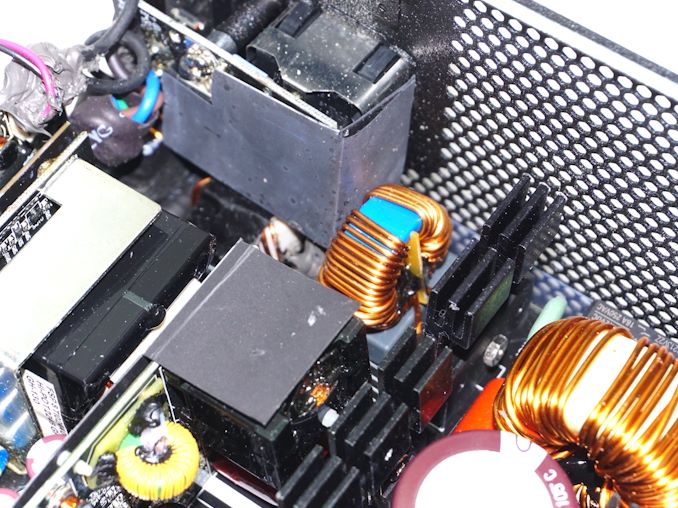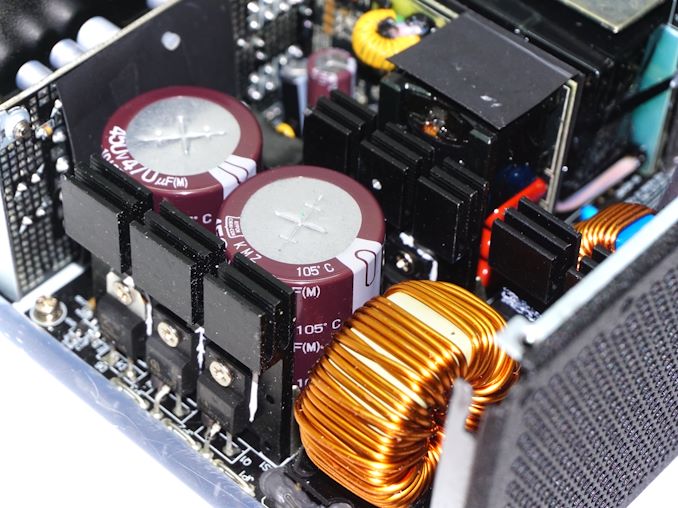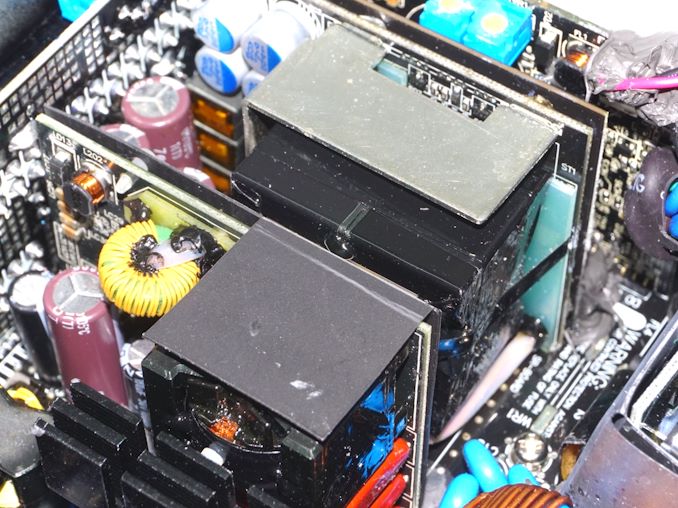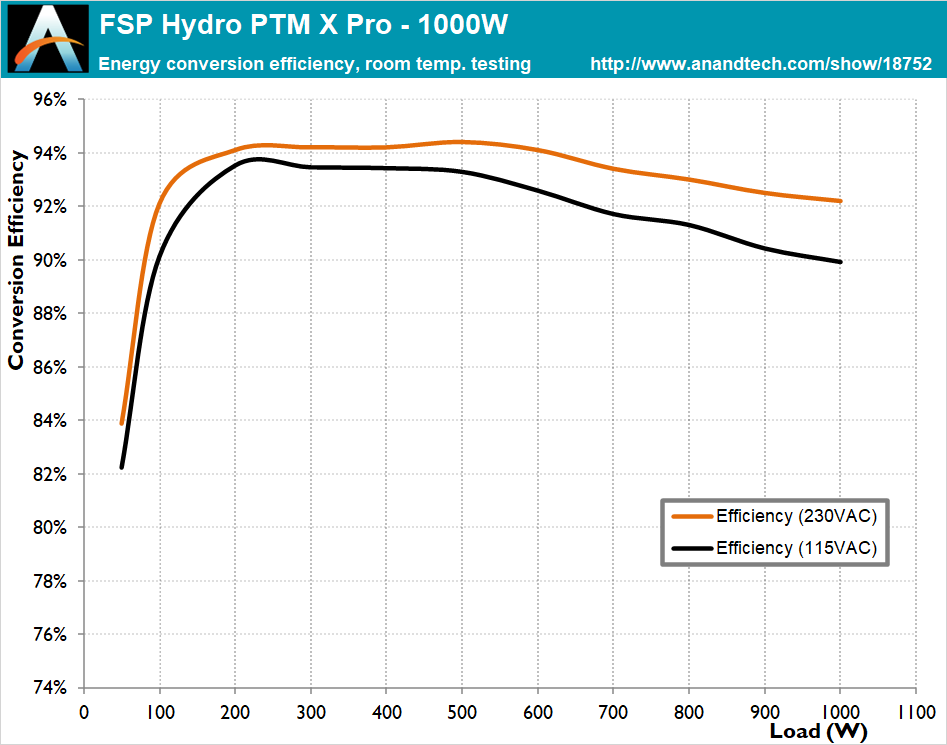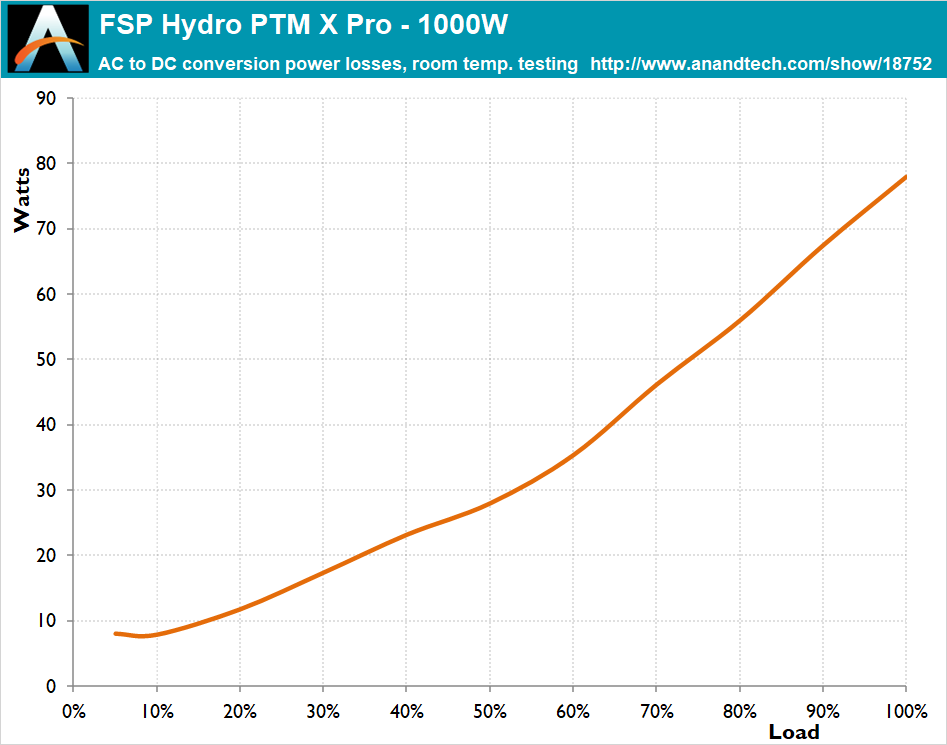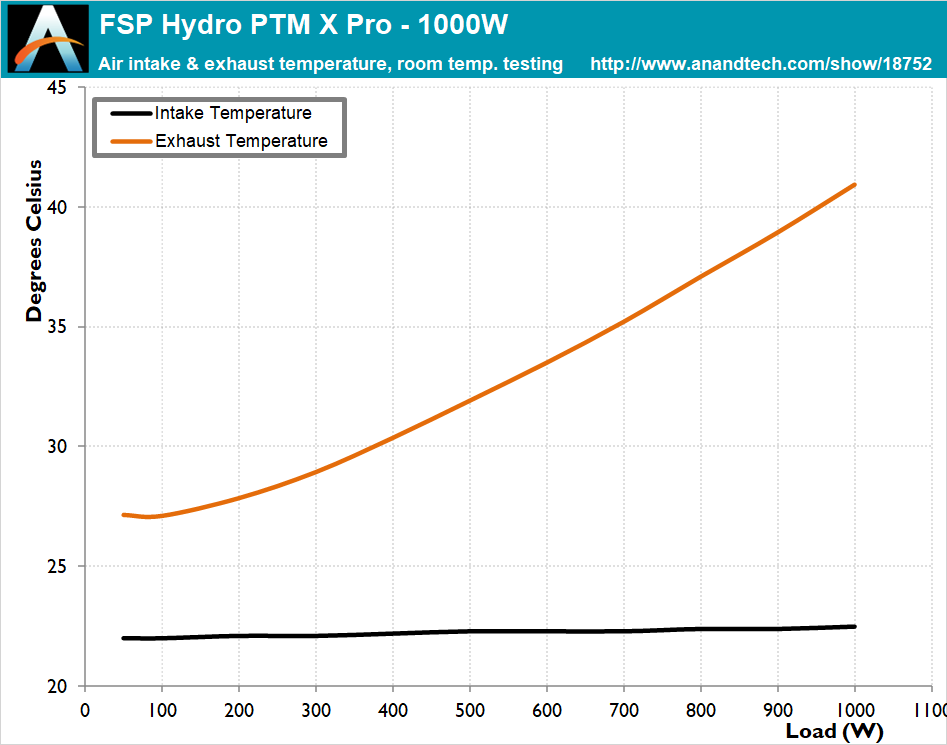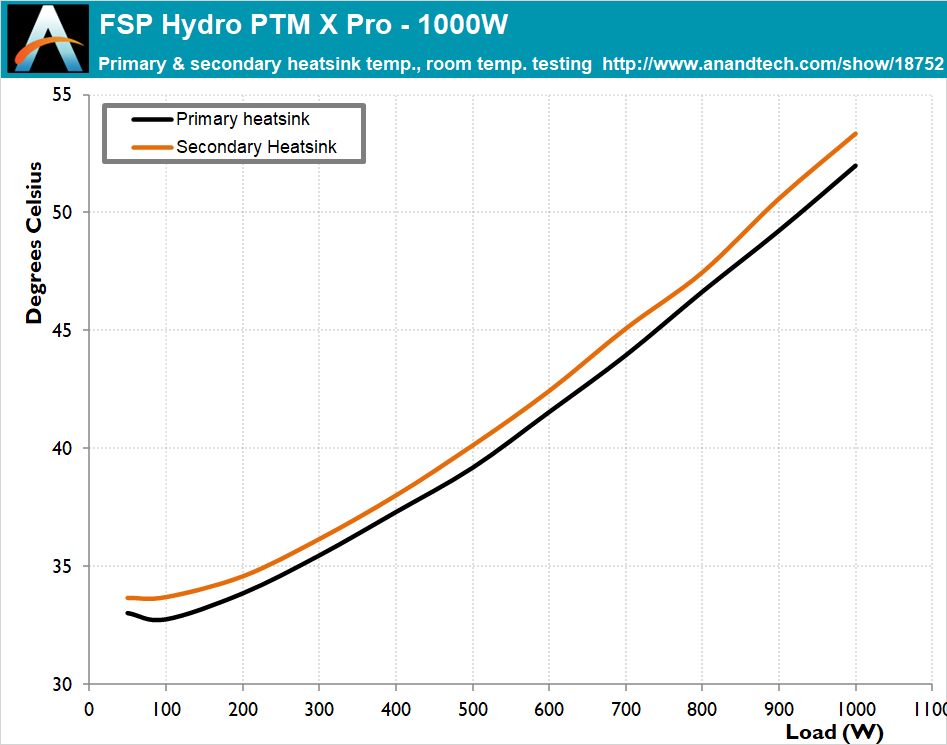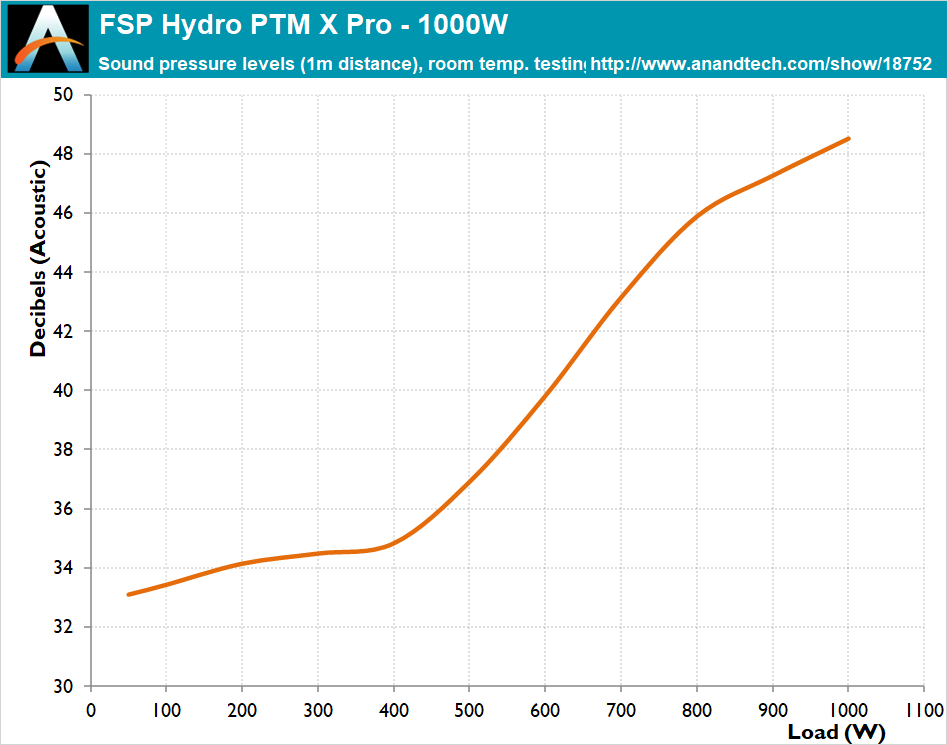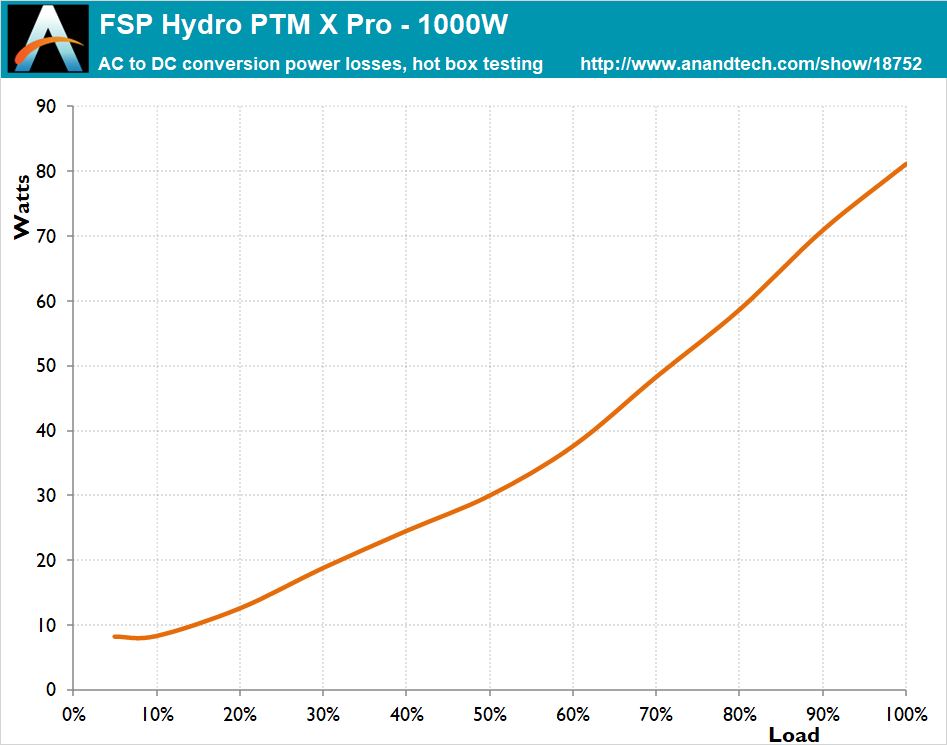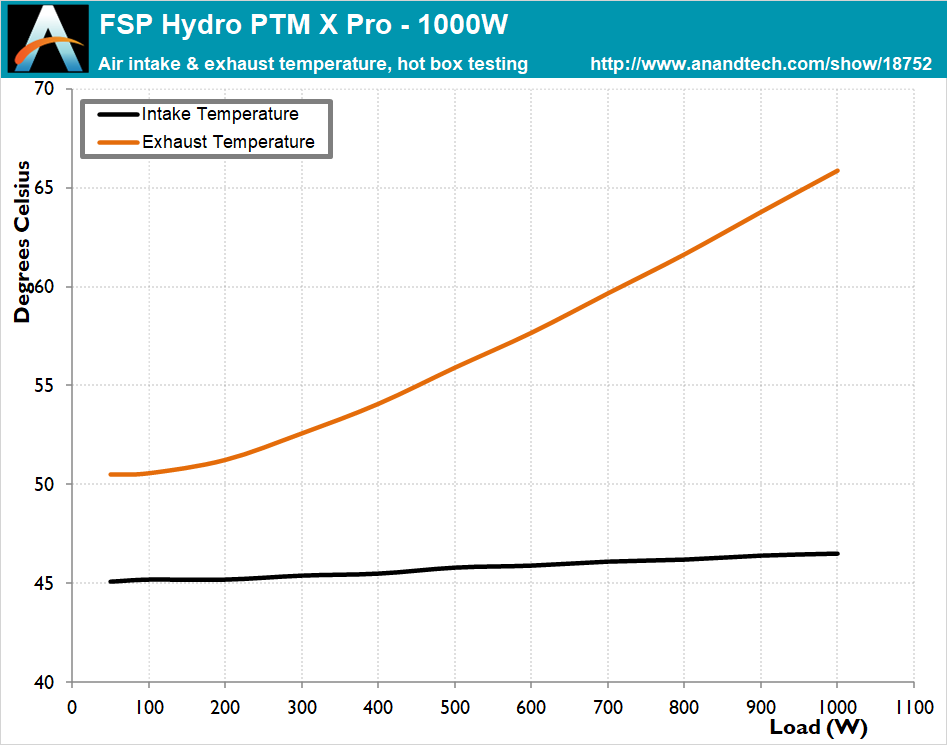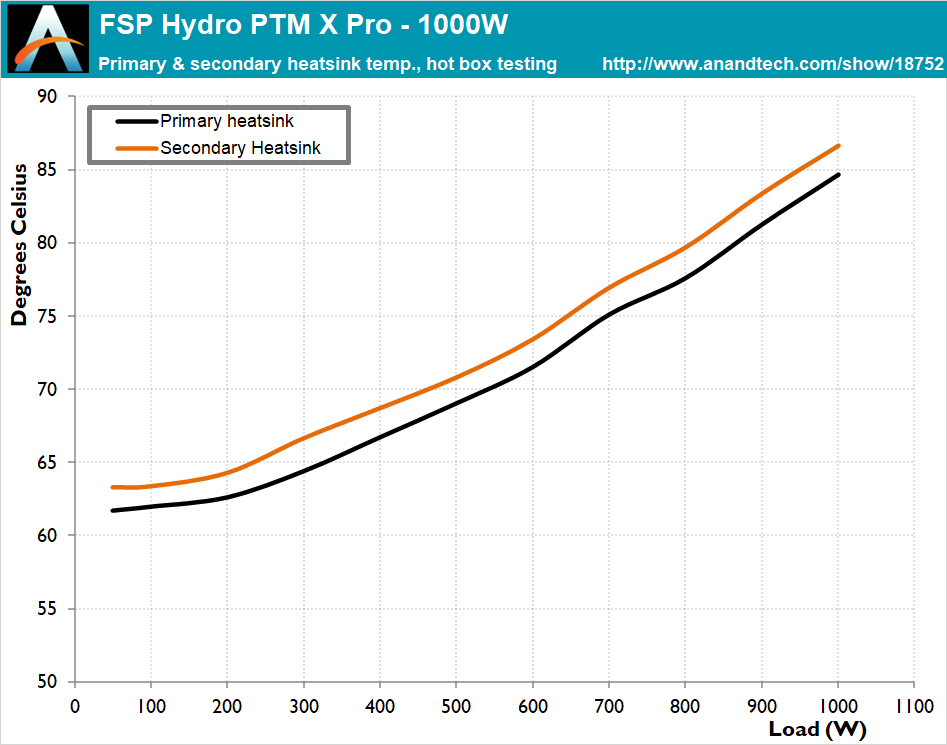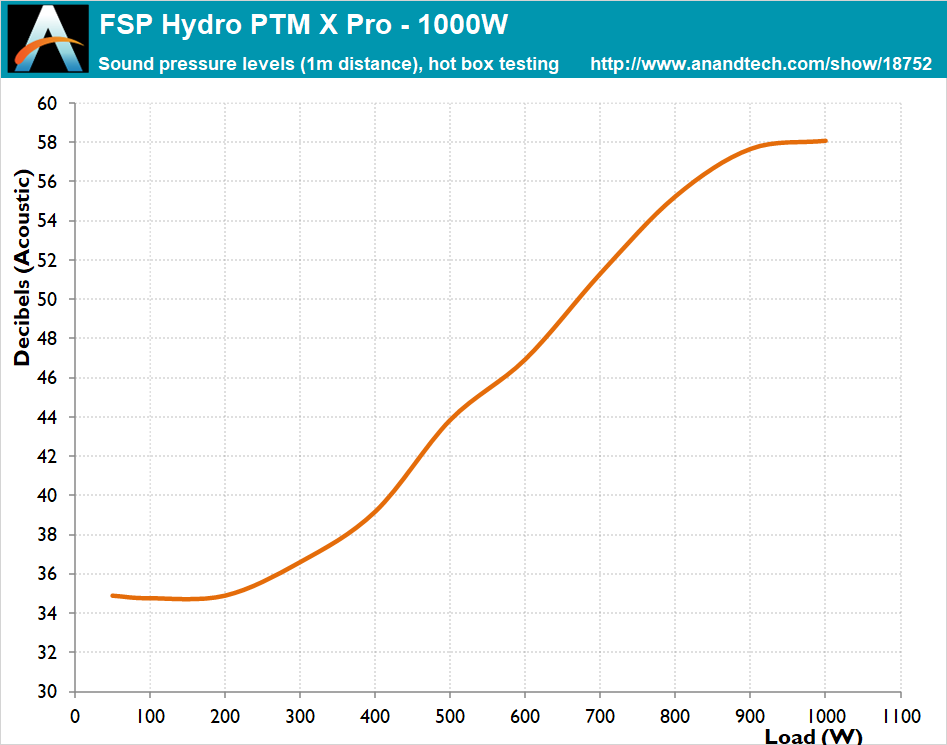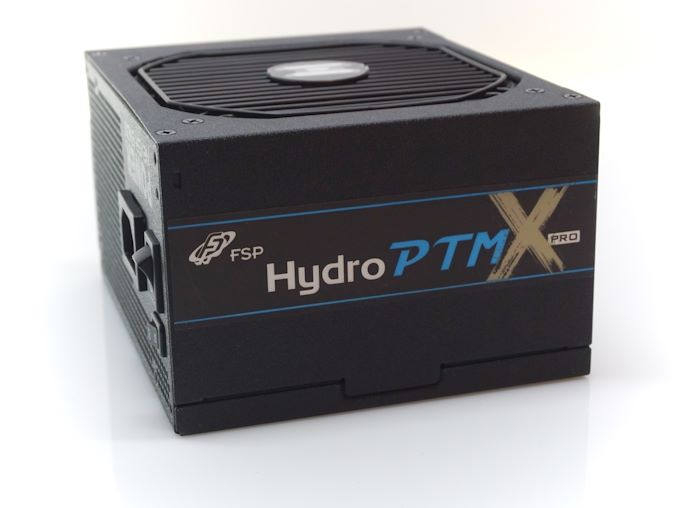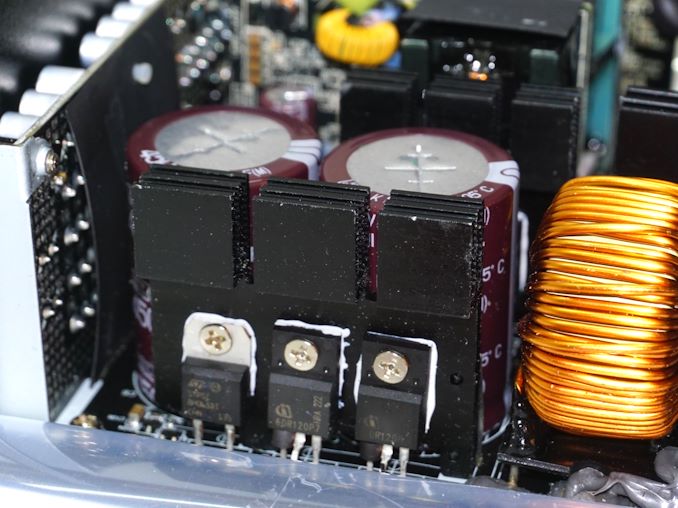
Original Link: https://www.anandtech.com/show/18752/the-fsp-hydro-ptm-x-pro-1000w-atx-30-psu-review
The FSP Hydro PTM X Pro 1000W ATX 3.0 PSU Review: Premium Platinum Power
by E. Fylladitakis on March 7, 2023 8:00 AM EST- Posted in
- PSUs
- Cases/Cooling/PSUs
- 1000W
- FSP
- 80Plus Platinum
- ATX v3.0
- 12VHPWR
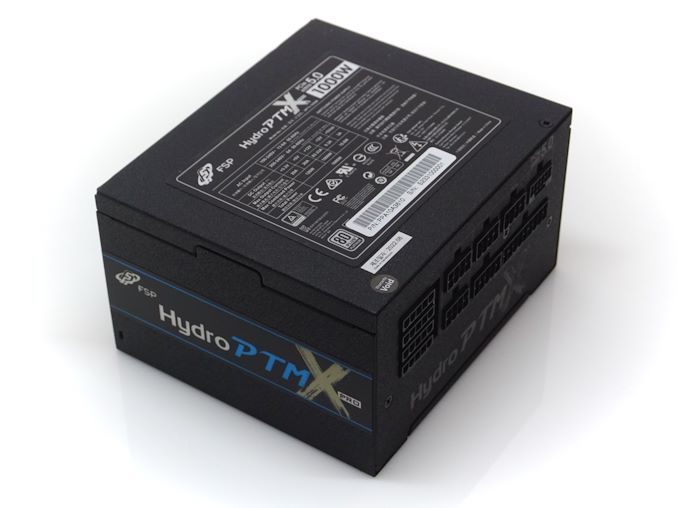
The global power supply market has been witnessing significant growth in recent years, driven by the increasing adoption of high-performance computing systems and the growing demand for energy-efficient products. According to a report by ReportLinker, the global PSU market is expected to reach $46.2 billion by 2027, with a CAGR of 5.9% from 2020 to 2027 (revised to 5.5% post-pandemic). Although the report includes almost every type of PSU (and not just PC PSUs), it also mentions the increasing demand for high-wattage PSUs for gaming and mining applications, which is expected to drive market growth further. Fortron Source Power, commonly known as FSP, was one of the primary sources that facilitated this report.
FSP is a Taiwanese company that has been providing power supply solutions since 1993. The company prides itself on its commitment to quality and innovation and has gained recognition for its reliable and energy-efficient products. FSP's product portfolio includes power supplies for personal computers, servers, industrial and medical equipment, LED lighting, and electric vehicles. FSP's power supply unit (PSU) division is one of its flagship businesses, and the company has been consistently expanding its product lineup to meet the growing demand for high-quality PSUs. Today the company offers a wide range of options to cater to different user needs.
In today’s review, we are taking a look at the Hydro PTM X Pro 1000W, FSP’s latest ATX 3.0-compliant unit. FSP released one of the first ATX 3.0 units in the market, the Hydro G Pro series, which we took a look at a couple of months ago. In comparison to that power supply, the PTM X Pro series is aimed at system builders seeking a higher level of performance, with the primary discernible difference being the 80 Plus Platinum efficiency certification. Of course, the better certification rating implies several design differences, which we will examine in this review.
| FSP Hydro PTM X Pro 1000W ATX 3.0 Power Specifications ( Rated @ 50 °C ) |
|||||
| RAIL | +3.3V | +5V | +12V | +5Vsb | -12V |
| MAX OUTPUT | 20A | 20A | 83.3A | 2.5A | 0.3A |
| 120W | 1000W | 12.5W | 3.6W | ||
| TOTAL | 1000W | ||||
| AC INPUT | 100 - 240 VAC, 50 - 60 Hz | ||||
| Street Price | $279 | ||||
Packaging and Bundle
FSP supplies the Hydro PTM X Pro 1000W in a colorful cardboard box with an additional cardboard ribbon around it. The box is very sturdy and the product is additionally protected inside thick packaging foam slabs. A wealth of information about the unit and its new PCIe 5.0 12WHPWR connector can be found on every side of the box.
Besides the necessary mounting screws and AC power cable, the company also supplies a couple of cable straps and a jump-start adapter for testing the PSU without connecting it to a motherboard. There are also two sets of side stickers, one green, and one red. The blue set is already glued to the unit. These stickers are permanent and cannot be removed without damaging them. FSP clarifies that the stickers do not affect the warranty, thus they can be removed/replaced without any repercussions for the consumers.
The FSP Hydro PTM X Pro 1000W PSU is a fully modular design, allowing for the removal of every DC power cable, including the 24-pin ATX connector. Nearly all of the cables are black, ribbon-like, with black connectors. The only exception lies with the PCIe 5.0 12WHPWR cable, which also is all-black, but it is a classic sleeved cable instead.
As we also saw on the packaging of the Hydro G Pro, the packaging of the Hydro PTM X Pro has printed on the box that the 12WHPWR cable is rated for up to “9.2 A per contact, with all 12 power contacts”. That is misleading wordplay, as many users may assume that all 12 contacts can deliver current to the card. Each of the power contacts of the 16-pin connector is indeed capable of handling 9.2 A, yet there are six voltage and six ground contacts, meaning that the cable has a maximum continuous current delivery capacity of 6 × 9.2 A, which fully conforms with Intel’s design requirements.
| FSP Hydro PTM X Pro | ||
| Connector type | Hardwired | Modular |
| ATX 24 Pin | - | 1 |
| EPS 4+4 Pin | - | 2 |
| EPS 8 Pin | - | - |
| PCI-E 5.0 | - | 1 |
| PCI-E 8 Pin | - | 6 |
| SATA | - | 12 |
| Molex | - | 3 |
| Floppy | - | 1 |
The FSP Hydro PTM X Pro 1000W PSU
External Appearance
Despite the high power output and 80Plus Platinum efficiency, FSP managed to maintain ATX-compliant proportions for the Hydro PTM X Pro 1000W. Actually, the company took it a step further than sticking to ATX-compliant size and reduced the length of the unit down to 130 mm, 10 mm shorter than the ATX-dictated length of 140 mm. This matters little to most users as the PSU still requires an ATX case to fit and would fit even if it was 10 mm longer – however, it could be important for those who explore custom builds and unique projects.
FSP sprayed the chassis with a textured paint that is both visually appealing and resistant to fingerprints. The fan finger guard is a separate but custom part, with the company logo decorating its center. The sticker with the unit’s electrical certifications and specifications covers most of the unit’s top side.
Decorative blue-themed stickers are pre-applied on the sides of the unit, which can be replaced with the red or green stickers that FSP includes in the package. The downside here is that the stickers will be destroyed once removed, making any choice technically permanent. There is also no embossed area or guide for the stickers, requiring a lot of attention and finesse when installing them to ensure they are level and symmetric.
A typical on/off switch can be seen at the rear side of the unit, beside the power connector. Another small switch right next to it controls the “ECO Mode” of the cooling fan. When activated, the cooling fan will shut off while the load is under 300 Watt. The front side of the unit is home to the numerous connectors for the modular cables. A subtle legend is printed under each group of connectors, sprayed directly onto the chassis, with the series logo covering the rest of the surface.
Internal Design
Due to the reduced size of the chassis, FSP’s engineers were limited to a 120 mm fan for the cooling needs of the Hydro PTM X Pro 1000W PSU. The fan is supplied by Protechnic Electric, FSP’s usual supplier of cooling fans. It is the MGA12012XF-O25, an 120 mm fan with a fluid-dynamic bearing (FDB) engine and an extremely high maximum rotational speed of 2700 RPM.
While most units nowadays on the market have a hidden ODM behind them, FSP is the sole company behind the creation of the Hydro PTM X Pro PSU from paper to product. A quick glance at the platform reveals that it is not just an upgraded version of the Hydro G Pro, but is in fact a significantly different design. Aside from the connector of the cooling fan, where someone went a bit overboard with the glue, the layout is extremely well organized.
The filtering stage begins on the rear of the AC receptacle and is textbook, with a total of four Y capacitors, two X capacitors, and two filtering inductors leading to a dual input rectifying bridge configuration. Both of the rectifying bridges share a sizable heatsink that is sandwiched in between them. The passive APFC components are two large 450V/470μF APFC capacitors by Nippon Chemi-Con and a sizable filtering coil. The active APFC components are on a long heatsink right across the edge of the PCB.
Unlike typical configurations that achieve the 80Plus Platinum certification level, the Hydro PTM X Pro has only two transistors that form a half-bridge inversion topology at the primary side of the transformer. The typical configuration here would be a full-bridge to give the unit that little bit of extra efficiency needed to reach a Platinum certification level, but FSP’s engineers managed to reach that efficiency threshold without it.
The secondary side is essentially placed on vertical PCBs. The smaller board is home to the LLC resonant circuitry and the larger board holds the majority of the secondary rectification stage, including the transformer itself. FSP’s engineers implemented synchronous rectification with very high-efficiency switchers (Toshiba TPHR8504PL), which is primarily how this unit reached so high-efficiency figures.
The 3.3V and 5V lines are being generated via the DC-to-DC conversion circuits, which is the norm for all high-efficiency designs. All of the secondary capacitors, electrolytic and polymer alike, are provided by Nippon Chemi-Con. A large number of additional filtering capacitors have been placed on the PCB holding the cable connectors.
Cold Test Results (~22°C Ambient)
For the testing of PSUs, we are using high precision electronic loads with a maximum power draw of 2700 Watts, a Rigol DS5042M 40 MHz oscilloscope, an Extech 380803 power analyzer, two high precision UNI-T UT-325 digital thermometers, an Extech HD600 SPL meter, a self-designed hotbox and various other bits and parts. For a thorough explanation of our testing methodology and more details on our equipment, please refer to our How We Test PSUs - 2014 Pipeline post.
When aiming for an 80Plus certification, designers usually focus on receiving the certification with an input voltage of 115 VAC, where the requirements are lower. The FSP Hydro PTM X Pro is a rare example of a unit managing to reach the 80Plus certification requirements regardless whether the input voltage is 115 VAC or 230 VAC. It displayed exceptional conversion efficiency figures, resulting to an average nominal load range (20% to 100% of the unit's capacity) efficiency of 93.6% when powered from a 230 VAC source, which drops down to 92.2% when powered from a 115 VAC source. These figures are high even for an 80Plus Platinum certified unit. Furthermore, this is a very rare case where the efficiency jumps up momentously when the load increases towards 20%, so the losses when the load is very low are actually higher and make the unit run a bit hotter.
We ran our tests with the Eco mode disabled, meaning that the fan began spinning instantly when the PSU was powered on. The cooling profile of the Hydro PTM X Pro is very similar to that of the cheaper Hydro G Pro but the difference in efficiency gives the former a vast advantage. The fan stays almost inaudible while the load is lower than 500 Watt, at which point it will begin spinning quicker in order to cope with the increased losses. However, the noise does not reach very high figures and the fan never reached its maximum speed even though the component temperatures are very low for a unit with that high a power capacity. There was clearly much room for better acoustics here but, much like we have seen in their previous designs, FSPs engineers steer their designs towards reliability over acoustics.
Hot Test Results (~45°C Ambient)
Every typical PSU design takes an overall performance hit when it operates in a hot environment. The FSP Hydro PTM X Pro displayed very high resistance to higher temperatures, with miniscule efficiency drop figures. The drop is an average of just 0.4% across the nominal load range and changes insignificantly when the PSU is fully loaded, suggesting that there is very little to no thermal stress.
The internal temperatures of the Hydro PTM X Pro are very low compared to any high output PSU operating in our hotbox. Although the temperature readings are on the heatsinks and not on the components themselves, these are amongst the lowest we have ever recorded from our testing of high output units and yet another indication that the engineers steered the design greatly towards reliability over everything else.
As expected, the hot environment changed the cooling profile of the Hydro PTM X Pro significantly. The cooling fan is relatively quiet when the load is very low but its speed will start increasing when the load goes above 200 Watt. The fan’s speed and, in extend, the noise increases almost linearly between 200 and 900 Watt load, at which point the fan reached its maximum speed. It is worthwhile to mention that the fan reached its maximum speed at a load much higher and while maintaining far lower operating temperatures than FSP’s 80Plus Gold certified unit.
Power Supply Quality
As part of our testing, we also check output parameters are within specifications, as well as voltage ripple and line noise.
| Main Output | ||||||||
| Load (Watts) | 201.47 W | 502.71 W | 750.39 W | 999.57 W | ||||
| Load (Percent) | 20.15% | 50.27% | 75.04% | 99.96% | ||||
| Amperes | Volts | Amperes | Volts | Amperes | Volts | Amperes | Volts | |
| 3.3 V | 1.85 | 3.36 | 4.62 | 3.35 | 6.93 | 3.33 | 9.24 | 3.33 |
| 5 V | 1.85 | 5.05 | 4.62 | 5.04 | 6.93 | 5.02 | 9.24 | 5.01 |
| 12 V | 15.39 | 12.08 | 38.47 | 12.06 | 57.71 | 12 | 76.94 | 11.99 |
| Line | Regulation (20% to 100% load) |
Voltage Ripple (mV) | |||||
| 20% Load | 50% Load | 75% Load | 100% Load | CL1 12V |
CL2 3.3V + 5V |
||
| 3.3V | 0.9% | 10 | 12 | 16 | 18 | 16 | 20 |
| 5V | 0.9% | 10 | 14 | 16 | 18 | 14 | 18 |
| 12V | 0.7% | 16 | 20 | 22 | 26 | 30 | 20 |
The electrical performance of the FSP Hydro PTM X Pro 1000W PSU is excellent, even for a top-tier product. It displayed outstanding filtering, with a maximum ripple of 30 mV on the 12 V line and 16/14 mV on the 3.3V/5V lines respectively. Regulation is great as well, with the unit maintaining the regulation below 0.9% on all three of its primary power outputs.
As part of our standard testing, we test the primary protections of all PSUs we review (Over Current, Over Voltage, Over Power, and Short Circuit). The FSP Hydro PTM X Pro 1000W ATX 3.0 unit successfully passed all of the tests, generally reacting timely when needed and shutting down to protect itself and the components it is powering. The OCP and OPP protections are set a bit high, with the unit almost immediately reacting to 135% current and 128% load respectively. These protections generally tend to be slack on ATX 3.0 units due to the power excursion requirements.
Conclusion
In conclusion, the FSP Hydro PTM X Pro 1000W ATX 3.0 PSU is a unit that features a design combining reliable topologies with great quality components. The company’s engineers are using top-line active components that were essentially required to achieve its very high-efficiency ratings, as well as only Japanese capacitors from Nippon Chemi-Con that are known for their durability, ensuring that the unit can withstand heavy use and deliver consistent power.
Perhaps the most prominent feature of the Hydro PTM X Pro is its excellent electrical performance. The unit delivered outstanding energy conversion efficiency, even for an 80Plus Platinum certified unit, and can reach the certification's requirements regardless of the input voltage. Additionally, the voltage filtering and regulation are exceptional, ensuring stable power delivery to the system.
The thermal performance of the Hydro PTM X Pro is also noteworthy. The design favors reliability and low temperatures over acoustics, resulting in minimal-to-zero thermal stress. The unit’s components operate at very low temperatures, which is great for its longevity. However, the noise output of the Hydro PTM X Pro is mediocre, it's quiet at lower loads and tolerable at higher loads at room temperature, but with high noise output if both the load and the ambient temperature are high.
The Hydro PTM X Pro comes with a high MSRP price of $279, which may deter some buyers. However, we expect that the market price will decrease over time, making it a more competitive option for advanced gamers and enthusiasts. Overall, the Hydro PTM X Pro offers great performance and reliability. Despite the lack of groundbreaking features or figures, it is a solid choice for users looking for a dependable ATX 3.0 power supply unit with good all-around performance.

